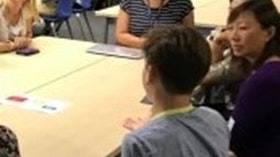Homepage
•
Learning Library
•
Blog
•
Students teach parents about social media
Expand breadcrumbs
Expand breadcrumbs
- Learning Library
- Blog
- Students teach parents about social media
- Homepage
- •
- Learning Library
- •
- Blog
- •
- Students teach parents about social media
Students teach parents about social media
By Craig Kemp
April 10, 2018








